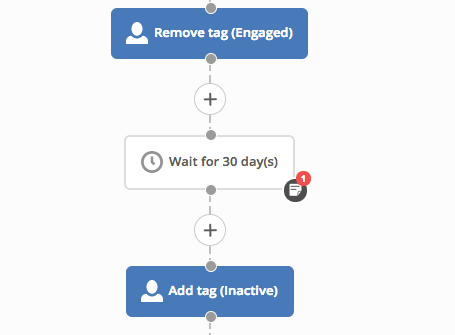Howdy
Although I manage several clients on AC with several thousand on their lists, their situations have been a lot more straight forward. They are bricks and mortar firms. Some automations have been layered, but nothing I couldnt handle thanks to these forums.
I am just now beginning to work on my own list. I know, right? My podcast is starting to take off, web traffic is up, getting ready to launch a (30) day challenge around ideation per an inforgraphic of mine that has taken off– so I guess I need to start dialing my own list management and automation.
Q1: Engagement 2 tagging. There is no time frame allocated to this which massively confuses me. All the triggers (read, click, or visits) are open ended. So if they did any of those things six months ago and not once since, Im not seeing how this helps me. What am I missing? I read that its on a 30 day clock but Im not seeing that in any of details?
Q2: Right below that is an exit and then below that is an enter automation with no delays or criteria in between. Not getting that? Why exit them if you are going to renter them right away?
Q3: On engagement tagging 1 automation, I get the first series of 4 tags and remove tags. But then it says wait 7 days followed by remove the recent tag. There is no action qualifier, as in, the person did or did not take an action. So whats, then, is driving the tagging determination of recent or not? This continue throughout the automation, with tags added or removed based solely on days not actions taken, which has me totally confused on how this tracks engagement when no engagement criteria are present?
I get that part 2 does track engagement, and that the two automations work in tandem, but per what I noted in Q1 and Q2, Im not getting how time frames drive any of this as none are listed.
In other words, Im totally lost! LOL
Thanks for the help
Bob
